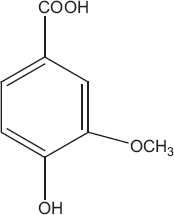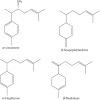A review on antiviral activity of the Himalayan medicinal plants traditionally used to treat bronchitis and related symptoms
- PMID: 27905101
- PMCID: PMC7166987
- DOI: 10.1111/jphp.12669
A review on antiviral activity of the Himalayan medicinal plants traditionally used to treat bronchitis and related symptoms
Abstract
Objectives: Bronchitis is a common respiratory tract infection of humans mainly caused by influenza virus, rhinovirus, adenovirus, coronavirus and respiratory syncytial virus. The aim of this review was to gather fragmented literature on ethnomedicinal plants used against bronchitis in the Himalayan region and their in-vitro validation against bronchitis causing viral pathogens.
Key findings: Present review contains ethnomedicines of total 55 plants from different countries of the Himalayas. Most of the literature reported was from India followed by Pakistan, China and Nepal. Familiarly used plant families for bronchitis treatment in the Himalayan region were Leguminosae (six plants) and Lamiaceae (five plants). Leaves and roots were the most common parts used in ethnomedicines against bronchitis. Of these 55 plants, only six plants have been studied in vitro against viral pathogens causing bronchitis. Different compounds like monoterpenoids, flavonoids, triterpenoids, iridoid glycosides, sesquiterpenes, benzoic and phenolic compounds were reportedly isolated from these plant extracts having strong antiviral potential.
Summary: The Himalayan regions possess variety of ethnomedicinal plants used against respiratory diseases, but still there are only few studies related with their in-vitro validation. We invite the attention of researchers for detailed ethnopharmacological and phytochemical studies on unexplored plants used to treat bronchitis for the development of novel antiviral drugs.
Keywords: antiviral activity; bronchitis; the Himalaya region; traditional knowledge.
© 2016 Royal Pharmaceutical Society.
Figures










References
-
- Wabale AS. Vital ethnomedicinal plant species exploited in treating bronchitis. Indian J Appl Res 2014; 4: 30–32.
-
- Lanzetti M et al. Mate tea reduced acute lung inflammation in mice exposed to cigarette smoke. Nutrition 2008; 24: 375–381. - PubMed
-
- Yoshida T, Tuder RM. Pathobiology of cigarette smoke-induced chronic obstructive pulmonary disease. Physiol Rev 2007; 87: 1047–1082. - PubMed
Publication types
MeSH terms
Substances
LinkOut - more resources
Full Text Sources
Other Literature Sources
Medical

